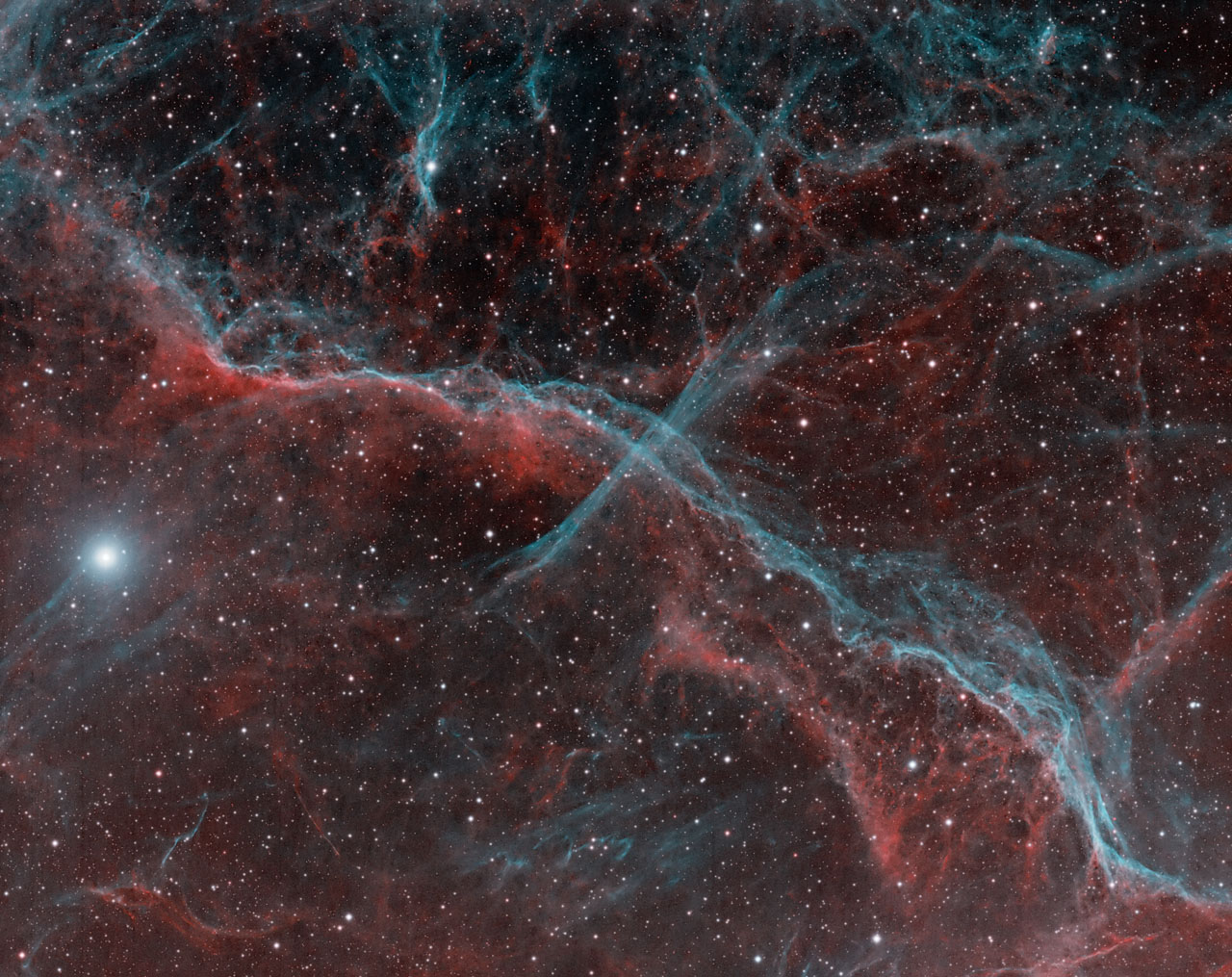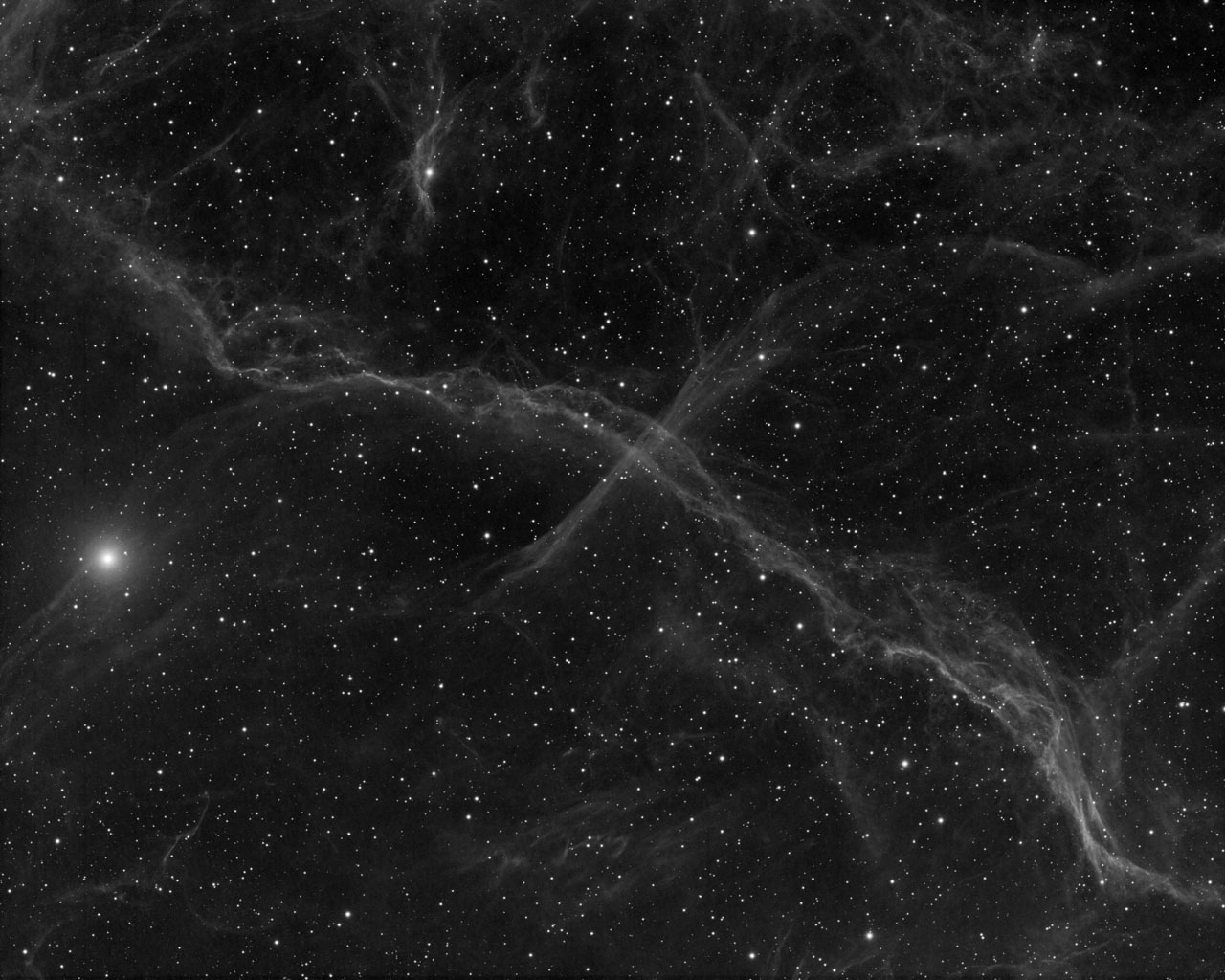A couple of months ago I posted just the H-alpha channel of this image from the remote observatory in Australia. The addition of O-III and S-II data makes a dramatic difference – well worth the wait!
This is actually just a small portion of the Vela SNR, one of the largest and brightest SNRs in our night sky, just 1.5 degrees wide out of the full width of 8 degrees. The supernova that produced this magnificent nebula happened about 11,000 to 12,000 years ago and was just 800 light-years from Earth in the constellation Vela.
The total exposure time for this target is one of the greatest of all my images, with 9 hours of H-a, 7 of O-III, and 10 of S-II, a total of 26 hours. The channels were combined as SH-O-OH. That is, the red channel is predominantly S-II with a little H-a mixed in, the green channel is O-III, and the blue channel is mainly O-III with a little H-a mixed in. This is unusual in that the H-a data is not dominant in the final image, although its presence helps to give some variation to the colors. All 3 channels are fairly different from each other, and make interesting images individually. I particularly like the monochrome representation of the O-III channel:
I haven’t researched what the bright star on the left is, but should explain that the apparent circle around it is not “real”, but simply a reflection of the star off the filter in front of the image sensor.

